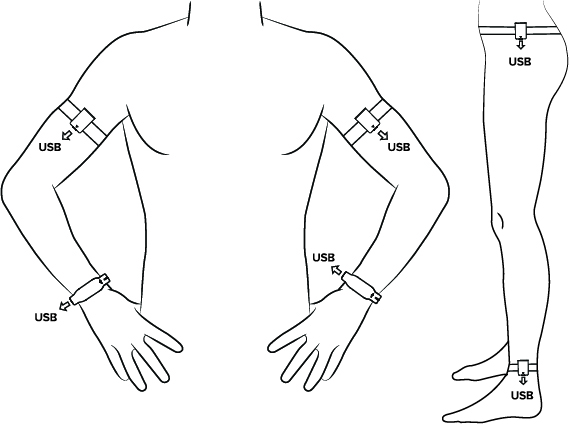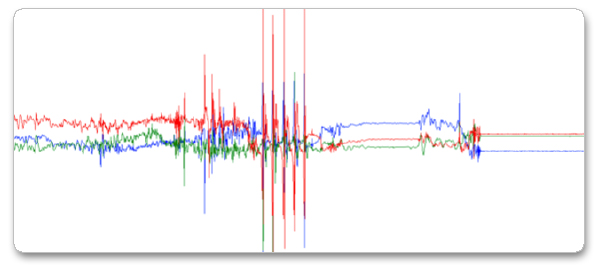Best Practices
Mounting Conventions
The WAX9 device is suitable for monitoring human movement data. However, for successful data capture the WAX9 must be securely fastened to the target with minimal room for vibration, slip or twist; this helps preserve only the motions of the target are captured. In addition, an attachment convention for device orientation will assist in consistent and comparable datasets being gathered. The below is a suggested orientation convention for popular body mounting sites. With the exception of the left wrist, the USB port is configured to point towards the ground.

To fix the sensor to other body positions where a strap or clip is not feasible, Axivity recommends the use of Hypafix or Flexifix dressings. Wrist mounting considerations
A popular site for mounting WAX9 devices is the wrist. For mounting the device on the wrist, the Axivity Wrist Band is recommended. This accessory has a convention where the arrow on the Puck aligns with the arrow on the band.

When in this location the user must consider the dexterity of the target. Depending on what sort of data is of interest to the user, the dominant, non-dominant or both hands may be chosen.
Typical use cases for gathering data from both hands include performing bi-manual skill assessments, fine-grained activity recognition and motor skill performance.
For single handed monitoring the choice between dominant and non-dominant hand must be based on if the data set will be used for activity classification and physical activity monitoring type applications (for which the non-dominant hand is a popular choice) or finer grained skill assessment of activities (for which the dominant hand is often used). Of course there are exceptions to these generalisations and the each experiment must be individually considered.
Data markers
When capturing experimental data it is often useful to place markers in the data. Such markers can retrospectively be used to identify certain event start and stops. A good marker should have the following characteristics;
- Be orientation tolerant
- Be easy to automaticaly identify in the data set
- Occur over a short period of time
- Be repeatable
A popular choice for creating a data marker is to subject the device to a short impulse force. Such forces can be generated through clapping with the device attached or held in the hand. The graph below is a graphical representation of the accelerometer data marker generated by 5 short successive claps.

When multiple devices are to be used in the same experiment and it is important that the captured data is retrospectively time aligned, subjecting multiple devices to the same data marking step will help this process.